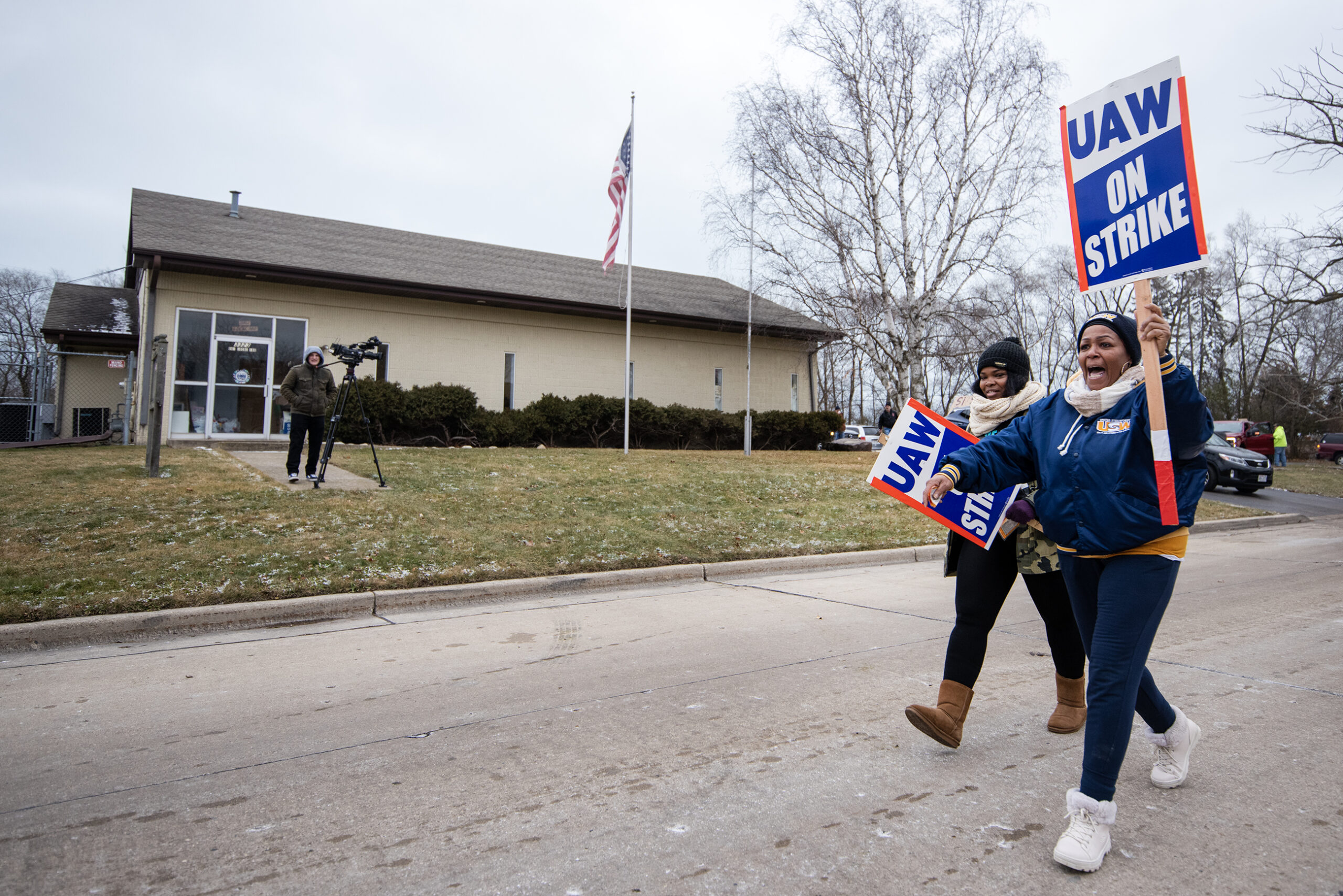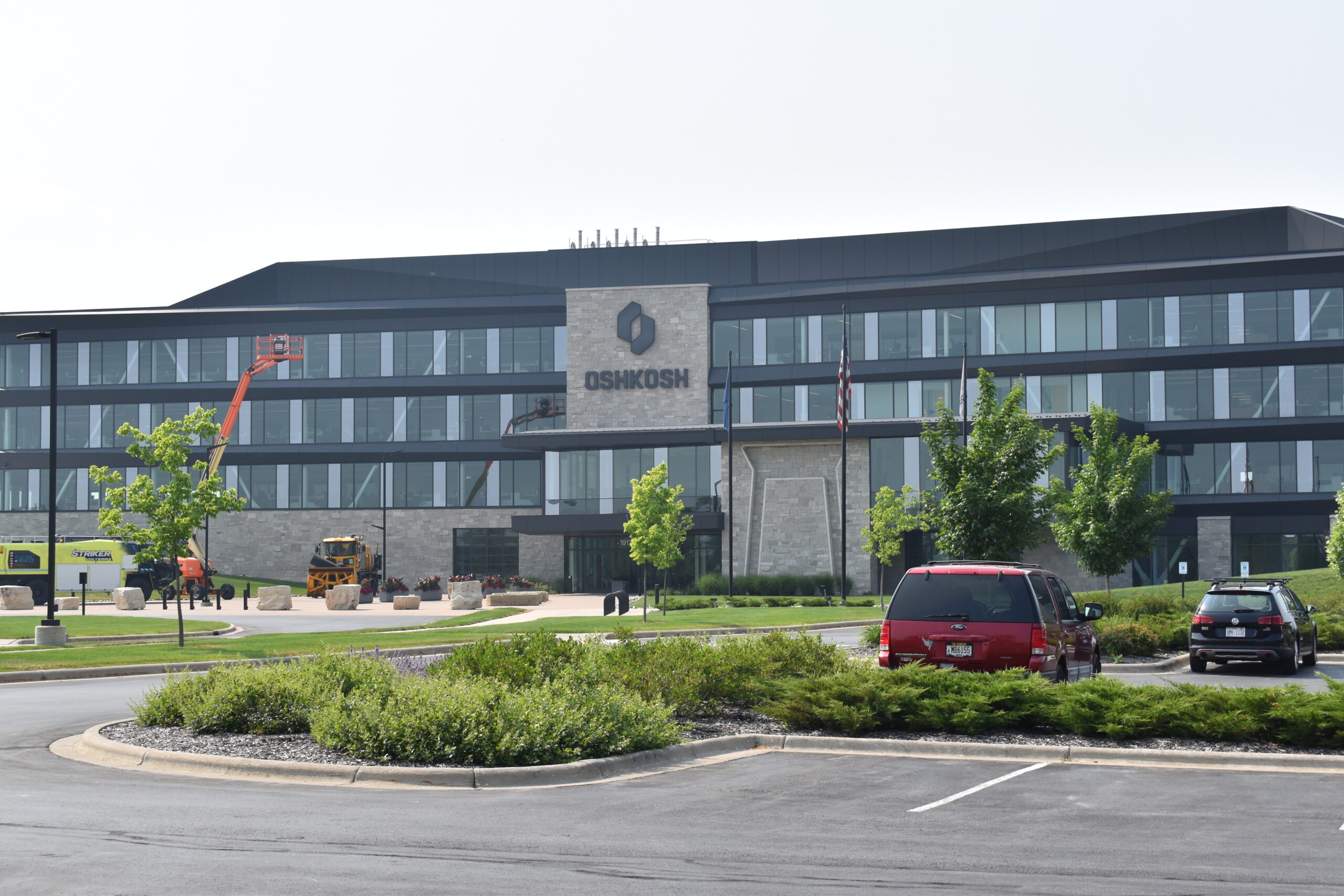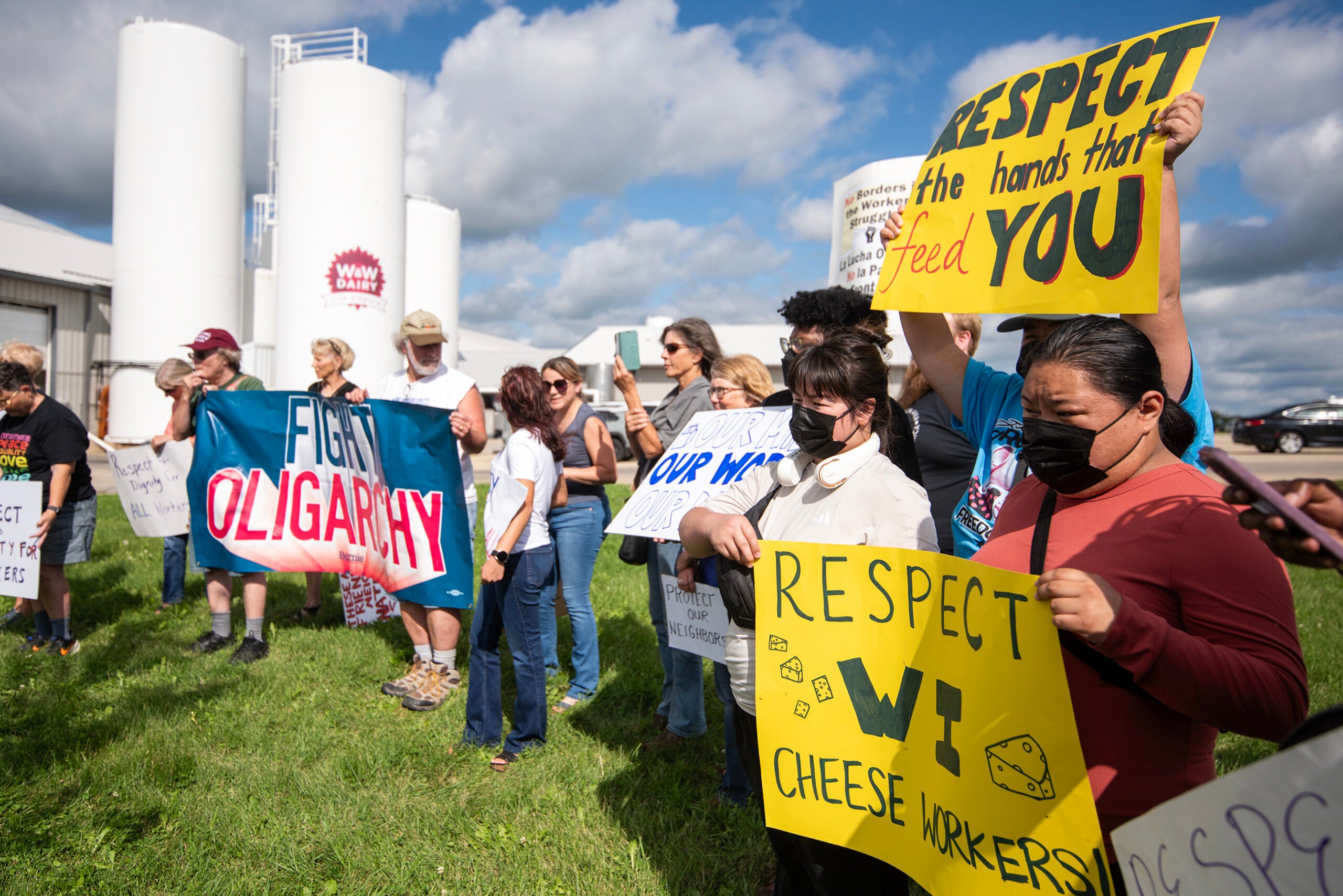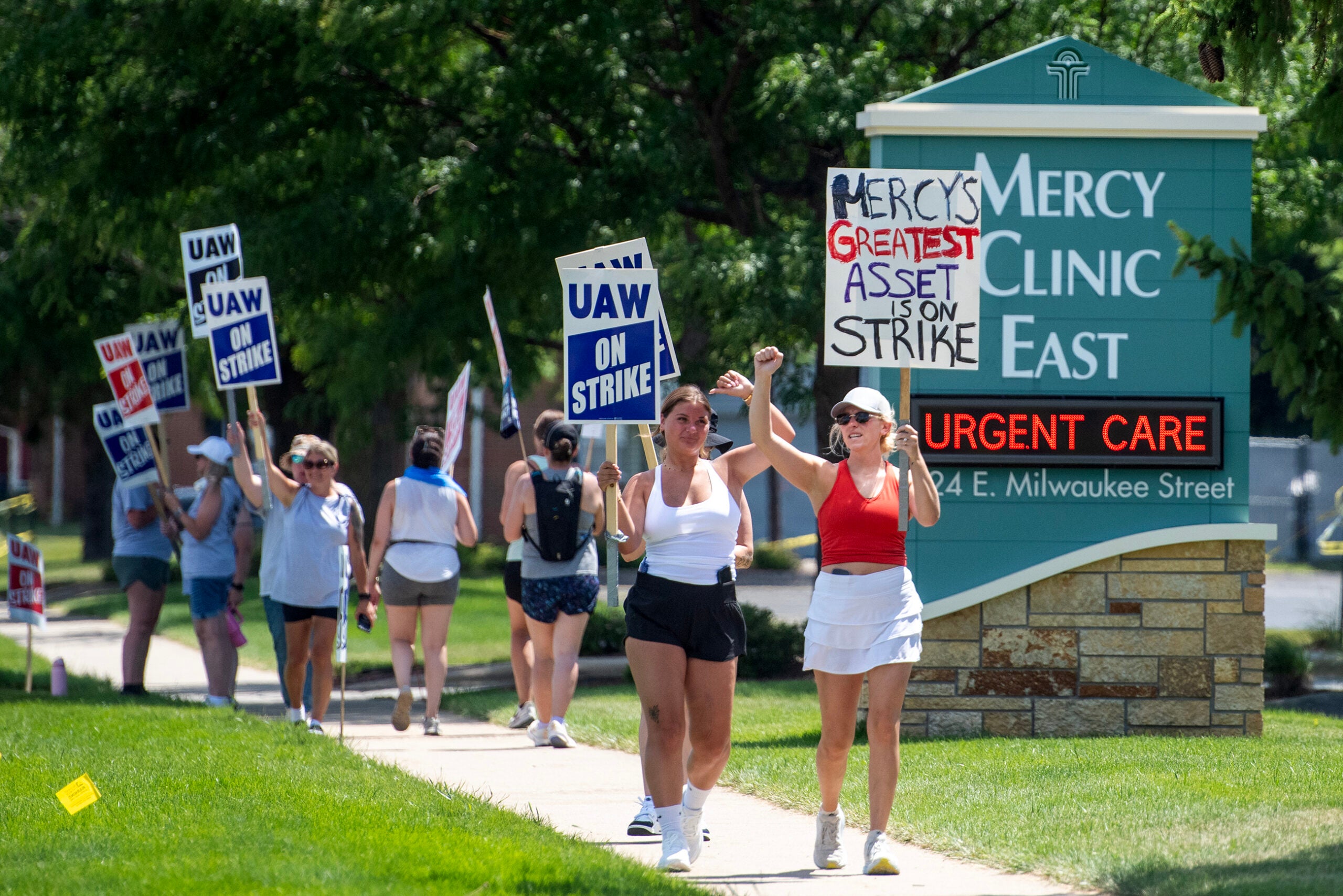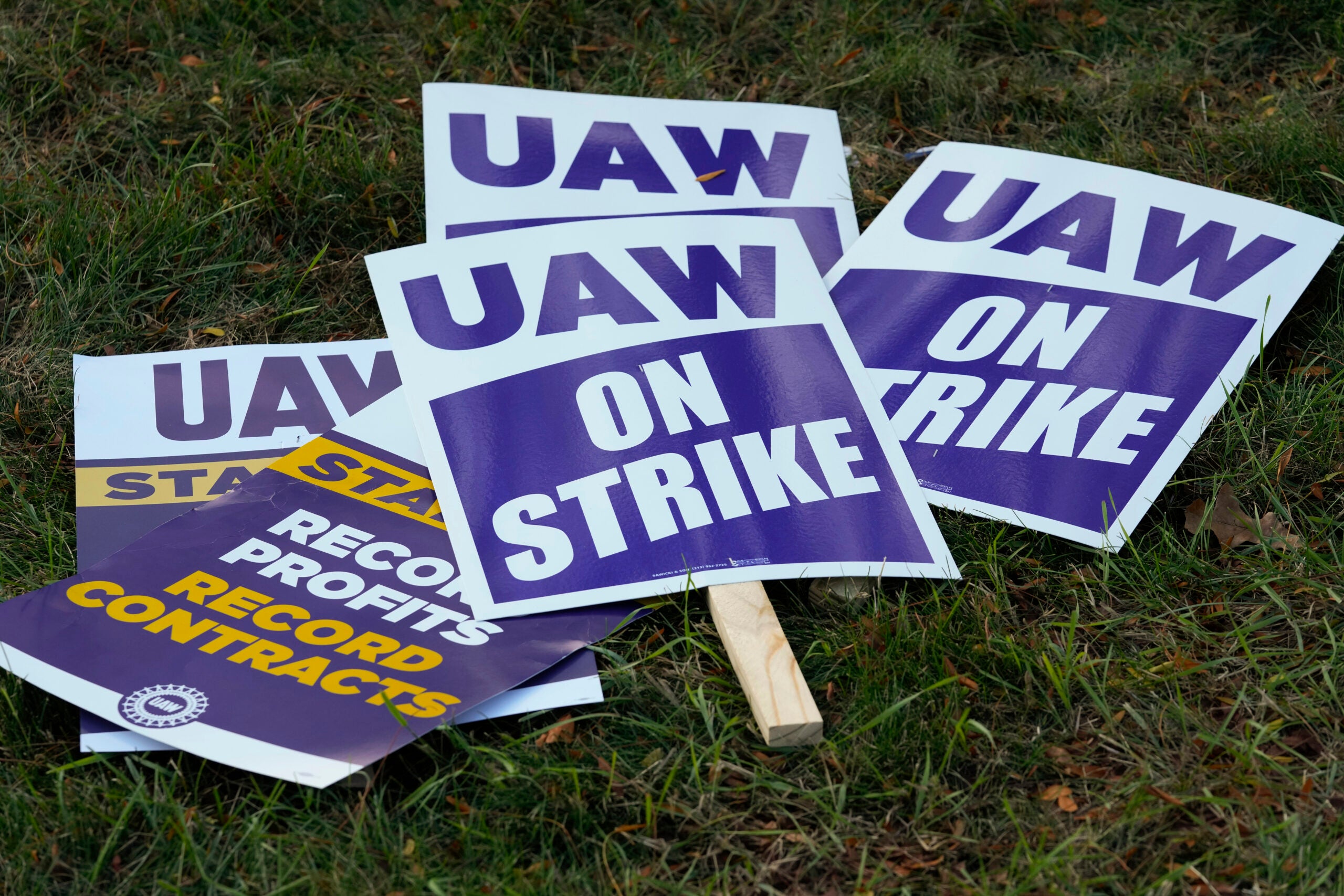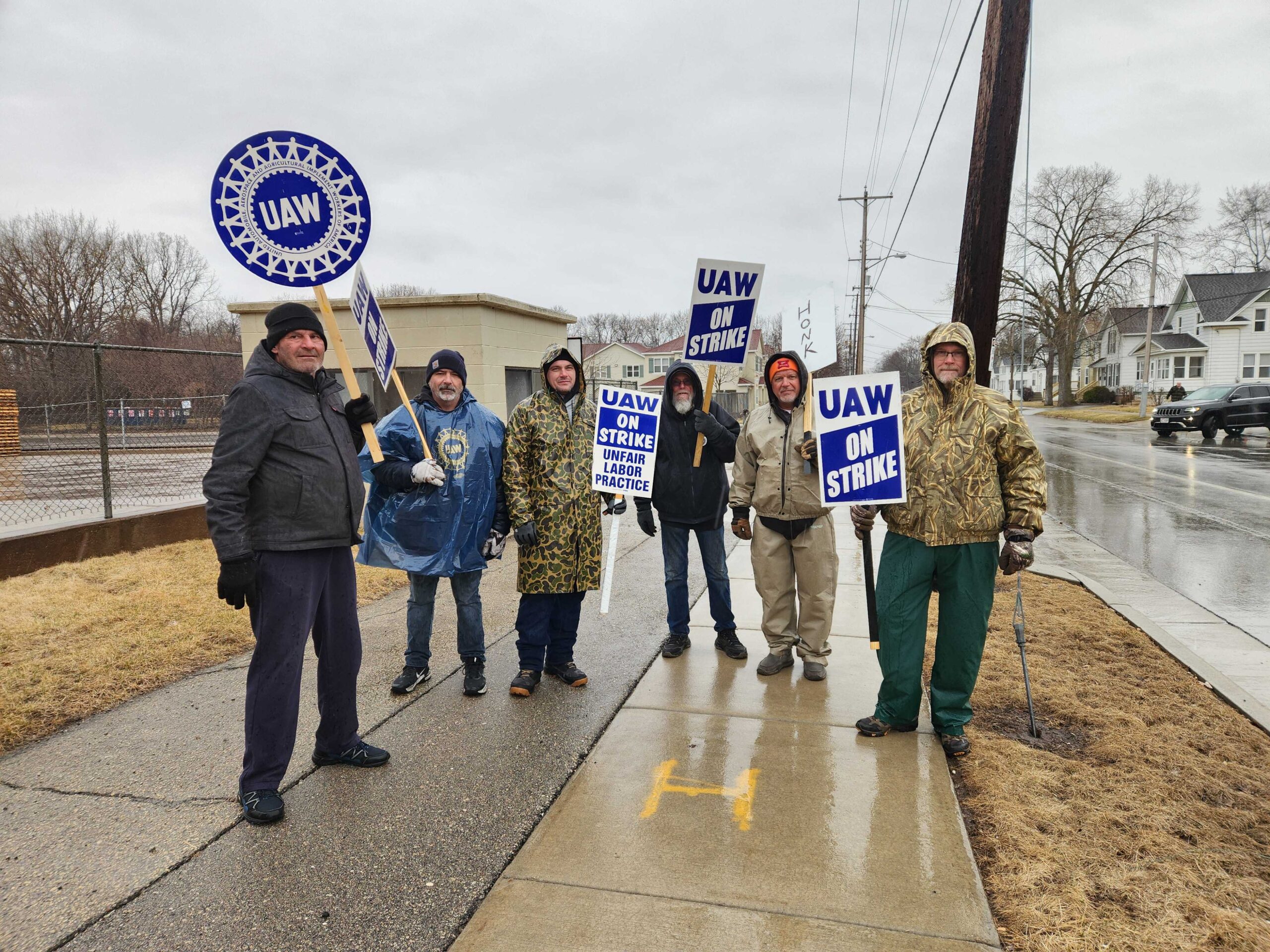About 200 Wisconsin autoworkers may go on strike Friday morning, but only if union leaders call for a stoppage at their specific work sites.
The United Auto Workers’ current contract with the three U.S. automakers expires at 11 p.m. Thursday. UAW President Shawn Fain said Wednesday that the union is prepared to strike if it does not have future agreements in place at that time.
Negotiating with all three companies at once is a break with the tradition known as pattern bargaining. For decades, the union would come to an agreement with one company and the others would follow the same parameters.
News with a little more humanity
WPR’s “Wisconsin Today” newsletter keeps you connected to the state you love without feeling overwhelmed. No paywall. No agenda. No corporate filter.
On Wednesday, Fain said if a strike is called, not all UAW workers would walk out. Instead, the union plans targeted strikes at assembly plants or parts distribution centers that could just as well halt manufacturing throughout North America
“I do believe that that’s given them leverage in the sense that it’s got the automakers off balance, and they’re not sure what the UAW is willing and able to do,” said Michael Childers, professor at the UW-Madison School of Workers.
Childers said the impact of a strike on Wisconsin employment would be “minimal” because so many manufacturing jobs have already been lost.
Wisconsin was once home to assembly plants in Janesville and Kenosha that employed thousands of workers. Today, there are three regional parts distributors in the state: General Motors in Hudson, Ford in Menomonie, and Stellantis, formerly known as Chrysler, in Milwaukee.
Despite the small number of employees, the Hudson site supplies parts to all GM dealerships in Wisconsin and ten other states. A stoppage there could lead to parts running out, and eventually decrease the inventory available on car lots.
Steve Frisque, president of UAW Local 722 representing Hudson and Menomonie, said he started his career in the Janesville assembly plant in 1986. At the time, the Janesville plant had almost 7,000 employees. Major vendors located near the plant provided even more auto industry jobs that were vital to the local economy.
The plant ceased all operations in 2009.
Frisque said car prices have gone up 30 percent since the UAW’s current contract was negotiated four years ago, while wages have never rebounded since workers made concessions during the auto industry bailout 15 years ago.
“(Cars aren’t) any cheaper. They’re just paying the people less. They’re pocketing more of the money,” Frisque said, noting that the auto company’s CEOs have seen a 40 percent pay increase in the past four years.
“Nobody seems to talk about that. It’s only when the working class person wants to get a share of that money so they can live a little better,” he said. “Then all of a sudden we can’t afford that.”
The union is seeking a 46 percent pay raise to make up for concessions made in 2017; a 32-hour work week for 40 hours of pay; the elimination of different tiers of wages and the addition of pensions for new hires; and cost-of-living pay raises, among other benefits.
In a statement Wednesday night, Ford President and CEO Jim Farley said the company made “a historically generous offer” addressing those concerns. He said Fain was not at the negotiating table.
“The first we learned President Fain received the offer was on Facebook Live this evening. So again, we are here and ready to reach a deal. We should be working creatively to solve hard problems rather than planning strikes and PR events,” he said.
Some want to see the union have a restored right to strike over plant closures. Andrew Stark, who represents Stellantis workers in Milwaukee, said he was a third generation worker at the shuttered plant in Kenosha.
“You go to the city of Kenosha right now, there’s a big hole in the center of the city that used to be a massive auto manufacturing plant,” he said.
Even with a smaller manufacturing base, a strike could have an impact on the state and region’s economy.
According to a report from the Alliance for Automotive Innovation, there were more than 127,000 total auto industry jobs in Wisconsin as of the end of 2022. Those jobs equal nearly eight billion dollars in income and one billion dollars in state tax revenue.
Stark said any wage increases won in a potential strike will only benefit the state’s economy.
“If we do gain somewhere economically, that money is gonna flow right back into the local economy once the strike is over,” he said.
Wisconsin Public Radio, © Copyright 2026, Board of Regents of the University of Wisconsin System and Wisconsin Educational Communications Board.
